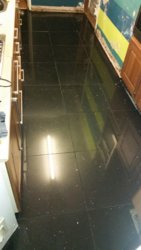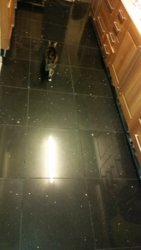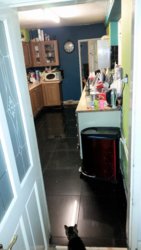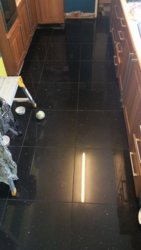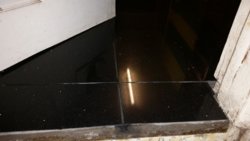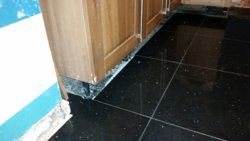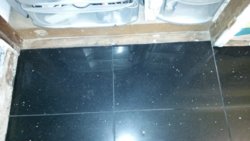Granty
TF
Hi, I am due to tile our Kitchen floor at the weekend, we went all out for the Black Star light tiles at 600mm, the area is around 10M2. This was a fair outlay to us price wise but I am confident I can do a good enough job so long as I have the right information.
I have done the Kitchen walls and people have said it looks good and I figured floors are similar and possibly easier, with gravity on your side?
I'm just unsure on a few basic details
1) Additives - We brought from Topps Tiles, I asked for 11M2 but when she printed a quote it was too much, she'd added an extra meter in there to which I told her I'd already compensated for waste so she didn't inspire confidence when she informed me that the adhesive and grout both need additives to make it stick to those type of tiles due to water content/warping.
3 lots of the floor additive were about £88 with the grout stuff at about £14. I want it doing properly but I assumed adhesive and grout alone would be OK, so do you recommend the use of additives on these type of tiles or was it just sales patter.
2) Would you apply adhesive to the floor or the tile and how thick should this be, around an inch? I guess so long as there are no voids then that is the main aim right?
3) Maybe a matter of preference but I was looking at the Grey/graphite type of grout but then I thought maybe Black/ebony would look better, I figure if it where possible no lines would look better on these types of tiles so black would help it look more streamlines given that the width of the kitchen only allows for 2-3 lines. I guess what I'm asking is would black look good as I've only seen this with the grey stuff?
4) one exit is to laminate but the other is a step down, do I tile right to the edge of this, would it need some kind of protective strip on the edge of it to avoid chipping?
5) Where do you start from, the kitchen has a small recess both ends and I guess walls are not guaranteed to be straight, so I figured starting slightly out and making sure that the tiles run parallel to the side wall and cupboards would ensure it looks right.
I have done the Kitchen walls and people have said it looks good and I figured floors are similar and possibly easier, with gravity on your side?
I'm just unsure on a few basic details
1) Additives - We brought from Topps Tiles, I asked for 11M2 but when she printed a quote it was too much, she'd added an extra meter in there to which I told her I'd already compensated for waste so she didn't inspire confidence when she informed me that the adhesive and grout both need additives to make it stick to those type of tiles due to water content/warping.
3 lots of the floor additive were about £88 with the grout stuff at about £14. I want it doing properly but I assumed adhesive and grout alone would be OK, so do you recommend the use of additives on these type of tiles or was it just sales patter.
2) Would you apply adhesive to the floor or the tile and how thick should this be, around an inch? I guess so long as there are no voids then that is the main aim right?
3) Maybe a matter of preference but I was looking at the Grey/graphite type of grout but then I thought maybe Black/ebony would look better, I figure if it where possible no lines would look better on these types of tiles so black would help it look more streamlines given that the width of the kitchen only allows for 2-3 lines. I guess what I'm asking is would black look good as I've only seen this with the grey stuff?
4) one exit is to laminate but the other is a step down, do I tile right to the edge of this, would it need some kind of protective strip on the edge of it to avoid chipping?
5) Where do you start from, the kitchen has a small recess both ends and I guess walls are not guaranteed to be straight, so I figured starting slightly out and making sure that the tiles run parallel to the side wall and cupboards would ensure it looks right.


